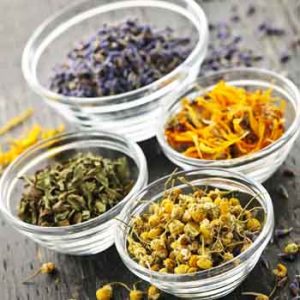
More evidence that low-calorie sweeteners are bad for your health
Studies show that artificial sweeteners can raise the risk of hypertension, metabolic syndrome, type 2 diabetes and heart disease, including stroke.

Have you ever wondered how to effectively substitute dried herbs for fresh herbs in remedies and recipes?
Fresh herbs are great and have a variety of uses, but because they are natural products they are governed by geography and the seasons. Drying them means you can enjoy their benefits all year long. But drying them also removes their water content and leave a much higher concentration of the active ingredients in the remaining plant material.
In the kitchen
When you are cooking knowing the right amount to use is important. As a rule of thumb 3 portions of fresh herb = 1 portion of dried herb. Translated into spoon measurements, 1 tbsp of chopped fresh herbs will equal approximately 1 tsp of dried herbs. This ratio also works for herbal teas.
In most cases, you can successfully substitute dried herbs in recipes that call for fresh herbs. However, there are some exceptions. If a fresh herb is a focal point of the dish, then using the dried version isn’t going to work. An example of this would be pesto, which requires large amounts of fresh basil leaves, cannot be made with dried basil.
In addition, there are certain herbs that are not well suited for use as dried herbs in cooking.
For example, chefs generally agree that dried dill, curly parsley, flat-leaf parsley, chervil or chives are no substitute for their fresh counterparts as the flavour of the fresh herb is far superior.
Use the dehydrated versions of these herbs as seasonings only if you really can’t get the fresh herb and cannot think of an alternative herb that you could use as a substitute in your recipe.
In addition many fresh herbs will freeze well and retain much of their flavour. To freeze a fresh herb chop it, coat it with a very little olive oil or water, and spoon the mixture into ice cube trays. Keep frozen until needed or for up to 6 months.
For a tincture
Things get a little more complex when you are making a medicinal product. Much will depend on the plant you are using.
For instance, for many herbalists fresh herbs are the only choice for making a tincture. Some herbs, such as lemon balm (Melissa officinalis) and yarrow (Achillea millefolium) lose some of the constituents, such as the volatile oils, when they are dried and are always bet used fresh.
For others a fresh herb tincture usually requires 1 part herb to 2 parts alcohol. This is known as a 1:2 tincture
To make your tincture put 50g fresh herb matter, chopped or ground/bruised slightly to help release the active constituents, into a sterile mason jar. Measure out 100ml of vodka and pour this over the herb. Label with herb and date. Shake and place in a cool dark area. Shake daily for about 4-6 weeks. Then strain through muslin cloth and decant into a small bottle with a dropper top. Remember to label it with the name of the herb and the date.
To make a dried herb tincture, you will need 20g dried herb matter. Measure out 100ml vodka. Combine in a labelled mason jar and shake. Shake daily for about 4-6 weeks then strain with muslin and bottle. Label your bottle with herb and date. This is called a 1:5 tincture.
Tips for choosing herbs
Whether you are using fresh or dried it pays to use the best quality you can find – and it goes without saying they should be organic to avoid any unnecessary pesticide or insecticide residues.
It is also essential to buy herbs only from ethical companies that actively pursue a policy of minimal environmental impact by encouraging organic cultivation and ensuring sustainable harvesting by indigenous communities. Such companies will also make sure that their herbs are fresh. Suppliers should ensure that they sell the correct species and that there is not contamination or infestation present.

Please subscribe me to your newsletter mailing list. I have read the
privacy statement